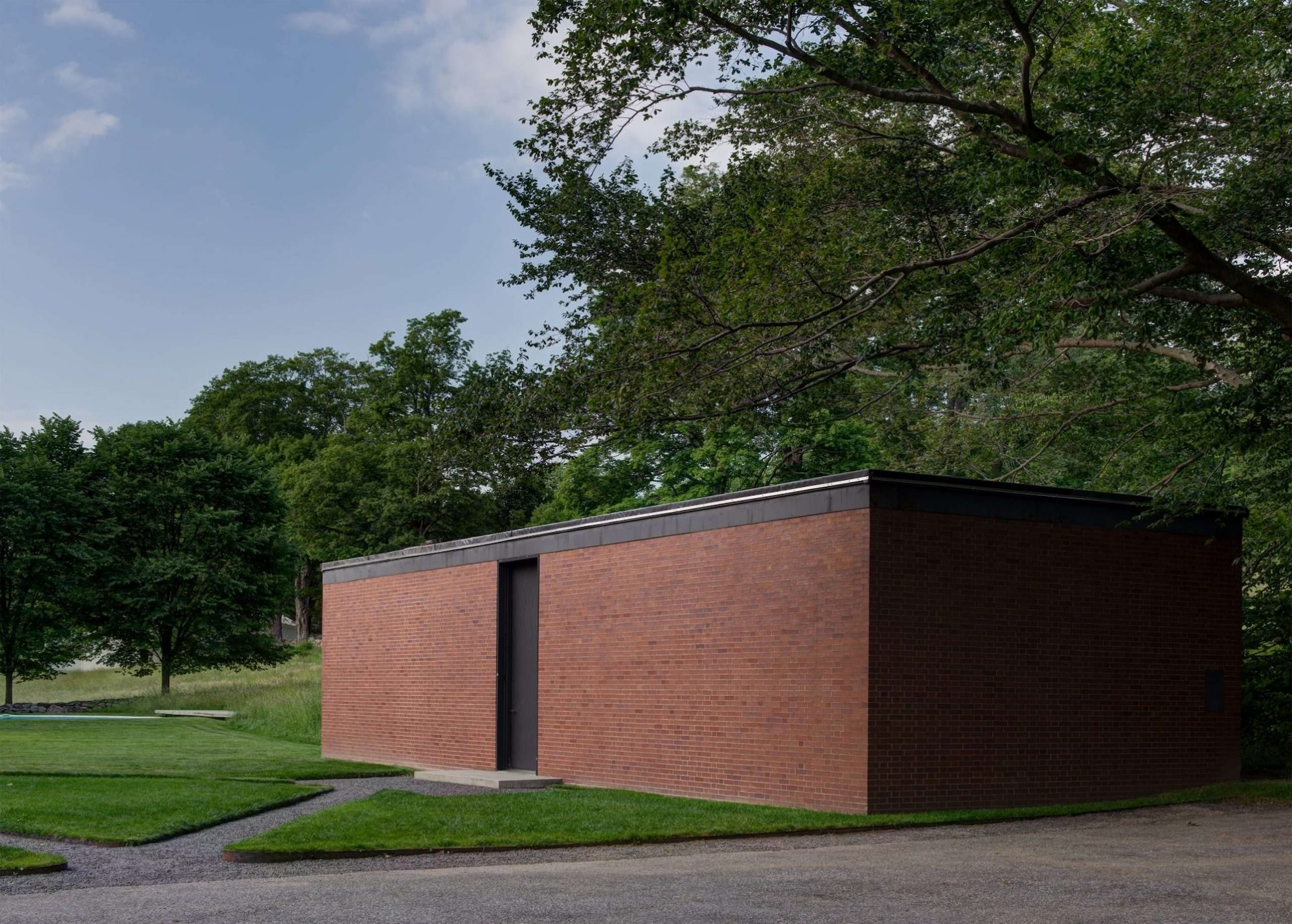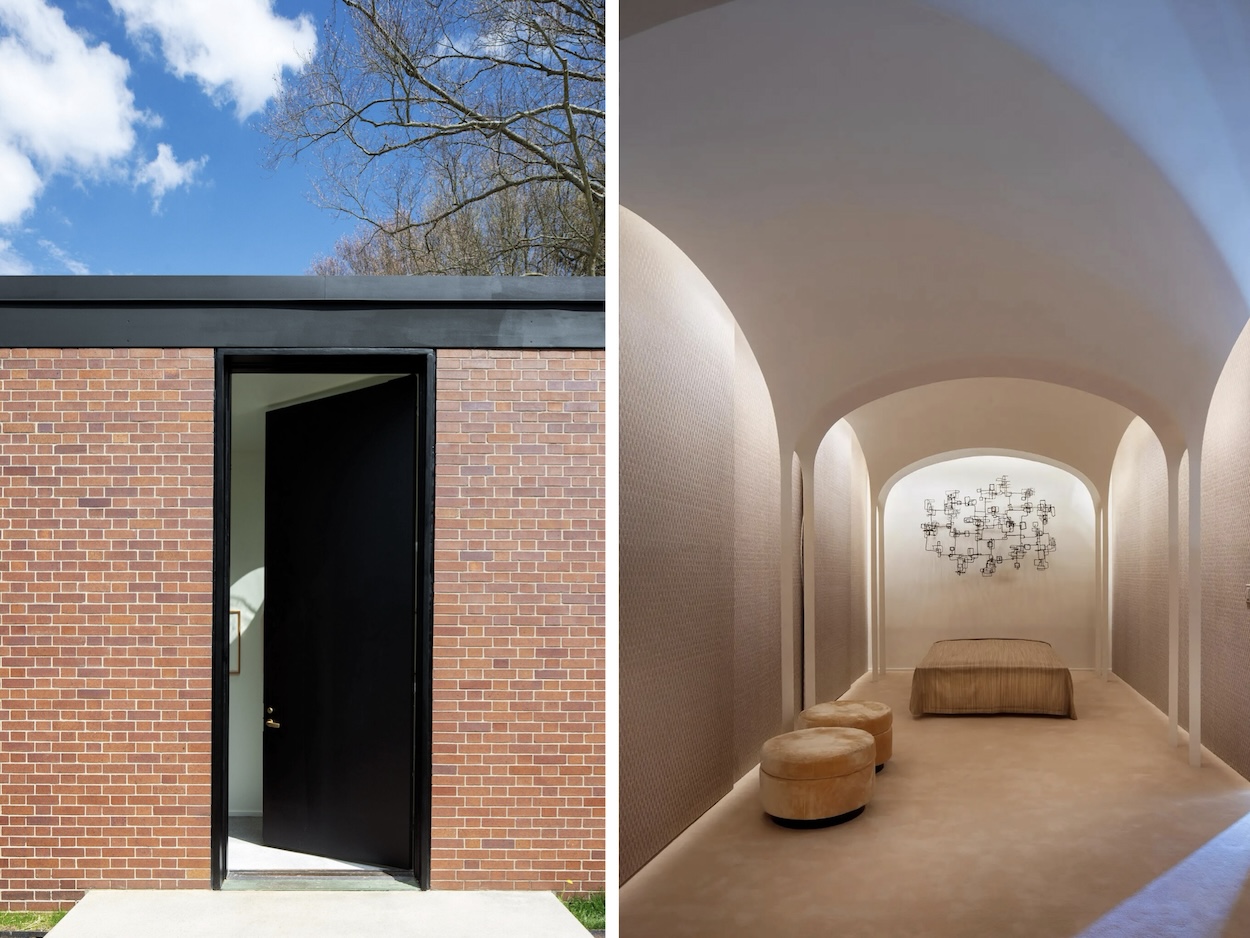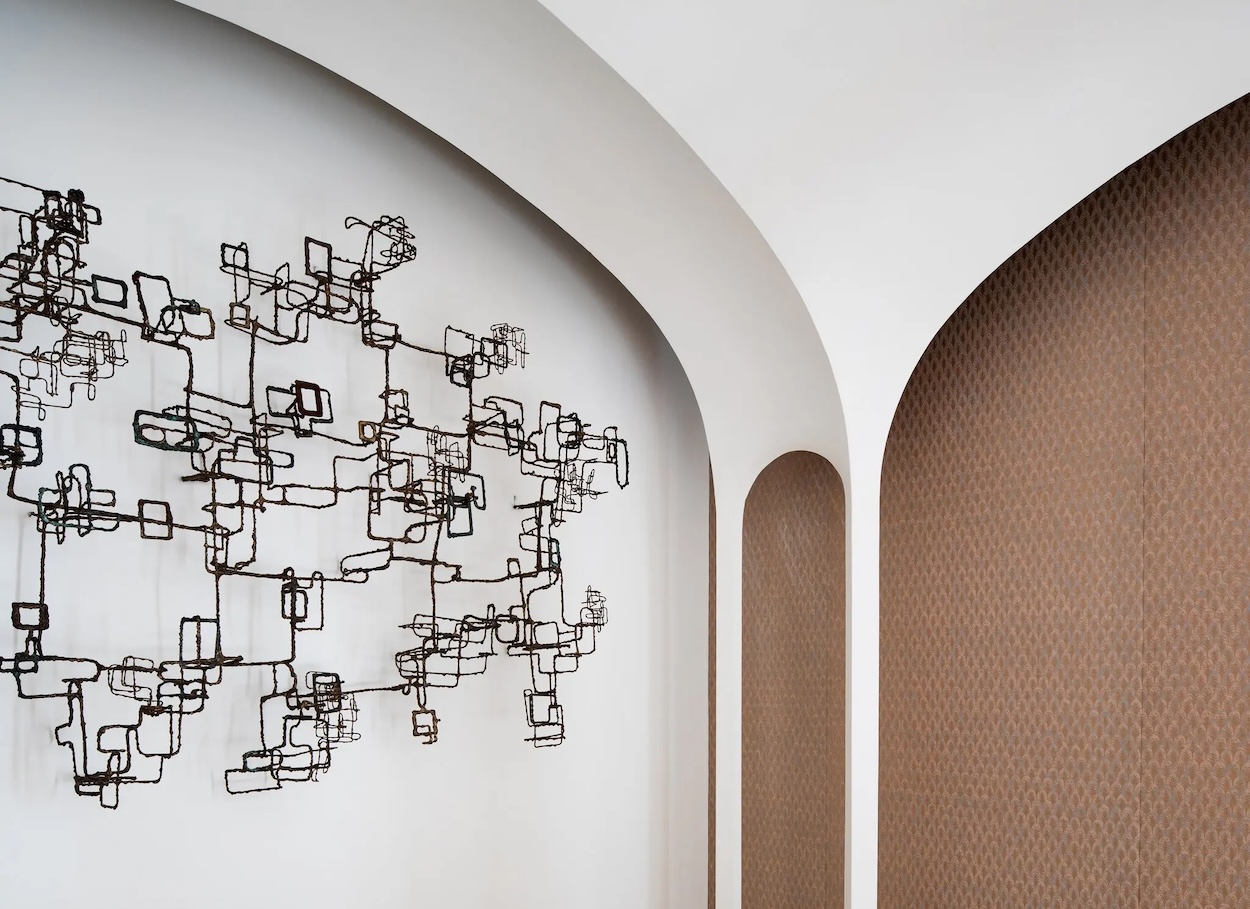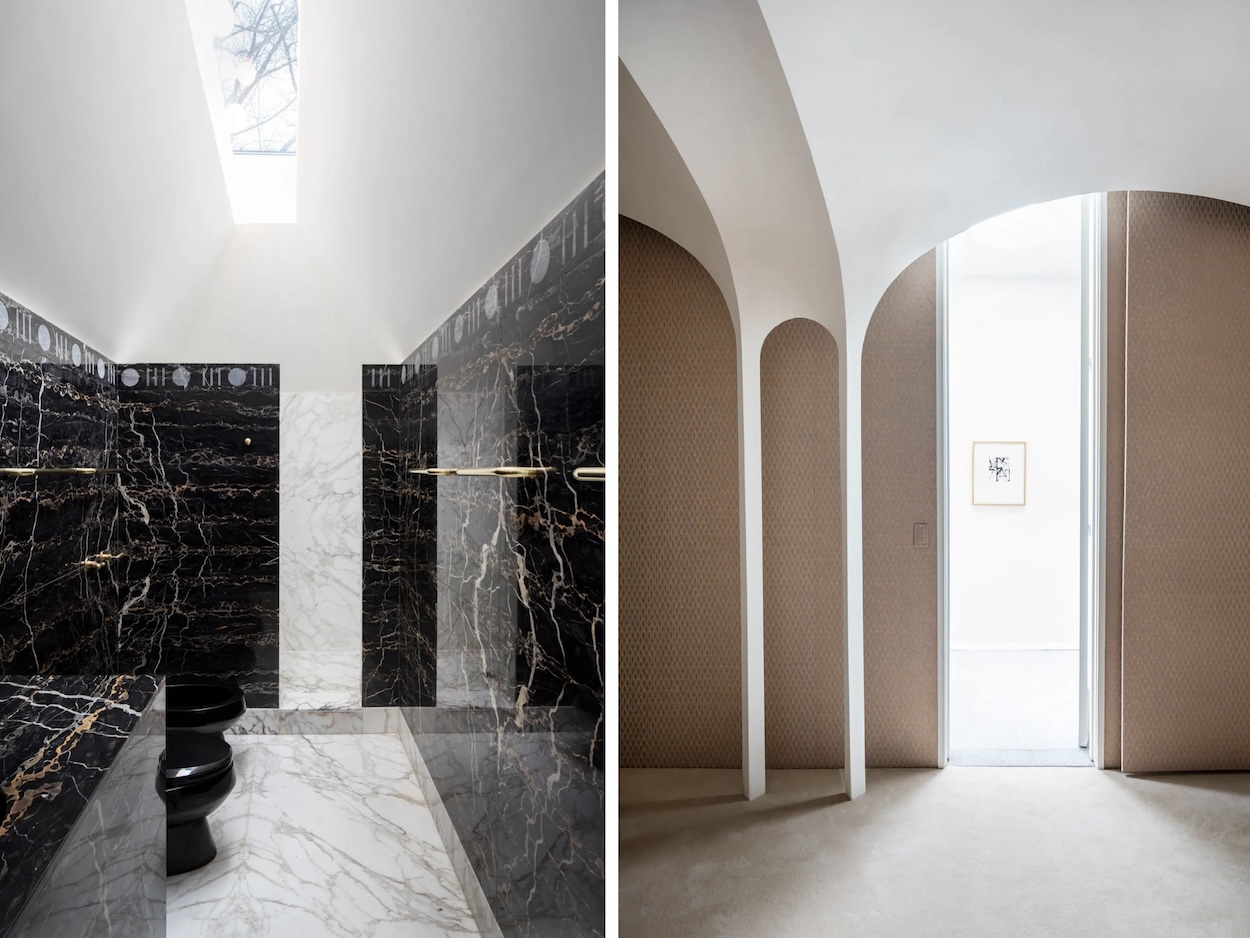The Glass House is often referred to mononymously, but savvy pilgrims eager to experience Philip Johnson’s former New Canaan residence soon discover a sprawling 49-acre campus encompassing 14 wildly different feats of architecture. There’s a subterranean bunker packed with art, an arched concrete folly on a pond, a one-room stone greige studio, and an airy sculpture gallery inspired by Greece’s seaside stairways. Many of these buildings came to light when the National Trust for Historic Preservation opened the estate to the public as a museum in 2007, but one—an unassuming brick guesthouse an 80-foot jaunt from the Glass House—had long been closed due to water damage. Thanks to an extensive restoration timed to the campus’s 75th anniversary season, it can now come into full view.
Johnson conceived and built the Glass House’s squat brick companion concurrently and always considered them two parts of a whole. “Neither was conceived without the other,” Kirsten Reoch, who was named executive director of The Glass House campus in September, told the New York Times. “So the idea that we’ve been showing and interpreting half the story, it kind of blows your mind.”
Where Johnson modeled the Glass House after his mentor Ludwig Mies van Der Rohe’s Farnsworth House in Illinois, its opaque counterpart instead served as an oft-revisited canvas for stylistic experimentation. Elegant interior arches were referenced at his opulent Beck House in Dallas; the bedroom’s Fortuny fabric reappeared at the Four Seasons restaurant. Such seductive details drove scholars to classify the Brick House as a queer space, bolstered by Johnson living as a closeted gay man for most of his career. He and his partner, the curator David Whitney, needed a private domain—one not flanked by a fishbowl—to protect Johnson’s professional profile from prying eyes. The house has only three small porthole windows, each facing the back. When Frank Lloyd Wright visited, he called the house a “fuck room.”
Though the decidedly louche sleeping quarters suggest otherwise, there was more to the Brick House than fucking. A quaint reading room outfitted with enveloping Gaetano Pesce chairs and 950 volumes about subjects like philosophy, art, and history speak to Johnson’s variegated interests. (He stored his books on architecture elsewhere.) They also reveal his troubling embrace of Fascism, which he briefly entertained before distancing himself from the ideology in 1940. Some scholars believe he was “deeply invested” for much longer and that traces of his troubling politics were built into the Glass House. Whatever the case may be, the campus plans to hire a full-time historian to delve into his beliefs more fully. For now, the Brick House, which opened for tours this past weekend, illuminates the dusty corners of a complicated figure who put up more walls than once thought.
All photography by Dean Kaufman unless otherwise noted.





